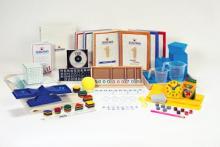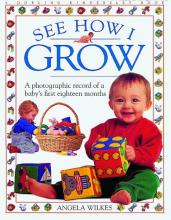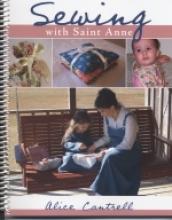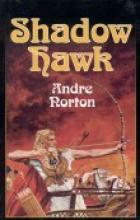No name
Schiller Math
Schindler's List
The movie is available (probably at your local library) on two video tapes. The first tape basically sets up the story of the Holocaust and how brutal it was. I understand that Spielberg thought this was important because he had become aware that many people today don't believe the Holocaust actually happened. There is a great deal of gore, nudity and other difficult content. Given the desensitization in our culture to gore and violence in movies in general, Spielberg may have felt that a graphic and realistic portrayal was necessary. I personally don't believe it is necessary to see all of this in order to grasp the importance of the story (particularly since most of my readers probably have no doubts about the reality of the Holocaust). I also don't think it's particularly healthy - spiritually or psychologically if you will - to plant such images in the imagination - particularly for young people. I suggest skipping this entire first tape.
The second tape focuses on the story of Oscar Schindler and how he rescued over a thousand Jews from certain death in the Nazi concentration camps. Even though it is milder in content than the first tape, it still contains some offensive/mature/objectionable content. Parents should definitely preview it before considering it for more mature high schoolers. Even then, it would probably be reasonable to edit certain portions with the fast-forward button. The ending is amazing and very powerful as we see the dramatic change in Schindler's character, his return to his wife and the Faith and, especially, his overpowering realization of the value of human life.
Despite the graphic scenes, the morals offered by the story in its entirety are good. I'm appreciative of Spielberg's acknowledgments within the story that Schindler's Catholic faith is connected with his good deeds.
For those who don't want to tackle this rather difficult movie, the story of Oskar Schindler is also told in A Place to Hide: True Stories of Holocaust Rescues by Jayne Pettit
Rated R, 197 minutes, Black and White
Director: Steven Spielberg, Starring: Liam Neeson, Ralph Fiennes
Schola Latina
After several challenging years of teaching beginning Latin to my elementary-grade children, I have finally found exactly the book that I wish I had had available from the beginning. Not only is this book classical in orientation and Christian in content, but it is also very well-organized and easy to use. This program can be begun as early as third grade by a motivated student with excellent reading fluency and some grammar knowledge, but it will be beneficial for a beginning Latin student of any age.
Schola Latina offers some unique features that make it stand apart from other Latin programs that are available. First, the vocabulary is immediately useful and relevant to the student. In the Preface, the author states, "When a present-day American child learns French (or English, for that matter), she begins by learning the names of the objects around her in the house. But when she starts Latin, she begins by learning military terms she's expected to come across in Caesar four years down the line. ... It was my goal that every word in the vocabulary list could be used in simple, natural sentences as the students learned the rudiments of grammar." Another very motivating feature is the variety of puzzles designed to drill the reading, writing, and spelling of the vocabulary words. This unique, painless spelling emphasis has an immediate benefit in the spelling of English derivatives as well. A third feature is the conversational practice in each lesson. Not only will the student practice the infamous Latin mottoes and lovely biblical phrases, he will also learn to say "Merry Christmas!", and "My head aches!"
Each of the twenty-four lessons includes five teaching sections and five clearly-marked daily assignments. The teaching sections follow this pattern: a famous Latin saying, a practice conversation, new vocabulary words with a few questions that require critical thinking, Latin grammar with English grammar review and comparison, and a history summary keyed to Famous Men of Rome. The Famous Men book is not required to use this course, but it will be a very useful addition to extend the history lesson. The daily assignments vary from day to day and week to week, but they all are very easy to use and work to reinforce the new material while reviewing previous lessons. Activities include oral recitations, written work on derivatives and history, and puzzles and translation practice; each lesson concludes with a reminder for the student's parent to check their work. The student's text also includes a pronunciation guide, a glossary (both English-to-Latin and Latin-to-English), a listing of Latin numbers, and several songs in Latin.
A Teacher's Manual is also available and highly recommended. It includes the full text of the student's pages, with the correct answers included, as well as specific teaching notes. The teaching notes describe potential difficult areas, suggest additional practices, and remind the teacher about the chants and forms to drill.
Further information and sample pages are available at the author's website noted below. I'm very excited about this Latin course, and I'm looking forward to using the second book in the series next year!
Science 4 for Young Catholics
This 4th grade science textbook is nicely laid out and easy to use. Each chapter begins with a brief biography of a famous Catholic scientist, like Copernicus, Mendel and Pasteur, followed by four literal comprehension questions. The goals of the chapter and an outline are also provided at the beginning of each chapter. Interspersed among the text of the chapters are experiments, activities, and review questions. There are also review study pages at the end of the chapter.
Since it is a Catholic text, the author inserts things to think about which are distinctly Christian. For example, in the chapter about plants, the text offers an explanation of the plant dying to release a seed. There is a picture of a Crucifix on the page and an accompanying caption explains, " . . .a flower dying to produce a seed reminds us of how Jesus suffered and died in order that we might have new life."
The topics covered in this course are The Heavens; The Earth, Moon and Space; Oceans, Weather and Climate; Water and Material Things; Machines; Living Things; The Wonder of Man; and Health. Many states require a health component and this last chapter handily takes care of that requirement.
The topics are arranged in the order of creation, which is great for religion, but not necessarily good for the study of science. If done that way, the student starts with things which are least known to him (the heavens), instead of those things which are most known. However, most secular science texts also start with things least known, like cells. A significant drawback to the text is that there are few if any true "thinking" questions. The questions for review are all explicitly literal comprehension. Even the experiments and activities do not ask the student to reflect about what he has observed or to draw conclusions. That seems to leave out a very important element in the study of science.
If supplemented with discussion and hands on activities, this could be a useful text because of the information it provides. The chapters do not rely or build upon one another, so you could teach the topics in any order you choose.
The 2012 and later editions feature updated and improved full-color illustrations as well as a new glossary and index. With the first edition (from 1999), some of our reviewers had concerns about some "cheesy" illustrations (such as a cartoonish picture of a sun with sunglasses in the astronomy section). We are happy to update our review to reflect that this is no longer an issue.
Secret Agents Four
See How I Grow
This well-worn book has been kicked-around, chewed on and well-loved by my young children since my second oldest received it for Christmas just before the birth of his new baby sister (he was two at the time). The book is a photo-story of the author's daughter as she grows from a new baby to an active toddler. Each two-page shows a number of pictures of the baby doing whatever she does best at that given age. It's a very simple idea, although with my adult fussiness I would only complain that the pages are a bit busy and I sometimes wonder if my very young children understand that all the pictures are of the same baby.
While not a board book, the pages are extra thick and have held up pretty well considering the wear-and-tear in our household. In fact the only major damage so far is that the front and back end-pages have been torn-off (which happily did not damage the actual text of the book). This is really a pre-preschool book (Ages 1 - 4).
Sense and Sensibility
Though more serious in nature than Emma, Sense and Sensibility portrays life in a more beautiful, if not always more fair, time. Three sisters and their mother are being turned out of their family estate upon their father's death because of the laws of succession to their half-brother, whose scheming wife prevents him from helping them out financially. After they move to a small cottage in the country, the family find friends and happiness in unexpected places.
There are a few very small parts that might be troubling to children (e.g. a blood-letting scene when one of the characters is sick), but it is otherwise suitable for family viewing.
PG, 136 min, Color
Starring: Emma Thompson, Alan Rickman, Kate Winslet, Hugh Grant
Sewing with Saint Anne
Today's young women can benefit in many ways from the lessons learned whilst sewing. Among them are the genuine self-esteem gained by completing a challenging task, patience both with oneself and with the project at hand, and quiet perseverance with a task that takes longer than expected. Sewing with Saint Anne is a delightful book that organizes and simplifies the steps needed to learn how to sew. The majority of the projects would appeal to a young lady from about age six onward if she had help, or from about age ten with just a little help. Many happy, productive hours can be spent by a mother and her daughter(s) or a group of young ladies and their teacher learning this useful, lifelong skill.
Sewing with Saint Anne is divided into three main sections: the lessons, Homemaking Projects, and Gift Projects. The lessons and projects are intermixed with interesting historical notes and quaint illustrations. There are twelve lessons that will be repeated any number of times as various projects are completed. The lessons begin with the basics of threading a needle and sewing a seam, continue with basting and hemming, and finish with the more difficult skills of gathering and embroidery. All but one of the lessons can be completed without the use of a sewing machine, although one may certainly be used; the final lesson is about sewing machines.
The sixteen projects are grouped into Homemaking Projects and Gift Projects, and patterns are included for each one. Permission is granted to photocopy the patterns for the purchaser's family only. Homemaking Projects are at the beginning, intermediate, and advanced levels and include a pincushion, a hand towel, a napkin, an altar cloth, and a lap quilt among others. Gift Projects are either for beginning or intermediate students; these include a hair scrunchie, a baby bib, a gift bag, and four others. Instructions for each project are clear and easy to follow with step-by-step guidance and profuse, uncluttered hand-drawn illustrations.
This book was donated for review by Catholic Heritage Curricula
Shadow Hawk
This dramatic story makes you feel like you've been dropped right into Ancient Egypt to experience life among soldiers and courtiers in dangerous times. The plot rivals the great adventure novels - secret plots overheard, dangerous undercover missions, daring military campaigns - and offers more besides. The characters are well-portrayed, not overly-simplified or stereotyped. The noble characters fight with courage and honor, and the author shows death and killing as an unfortunate consequence of a just war, not something to be gloried in or dwelt upon in a crude fashion (a remarkable departure from so many books and movies made today).The treacherous plottings in the court and the temples vividly and accurately portray those insidious evils that mix truth and lie into a complex deception. This sort of literature helps children to develop a strong moral sense of right and wrong and the intellectual skills necessary to distinguish the two. Suitable for upper grade school or high school.









